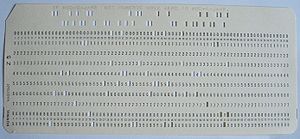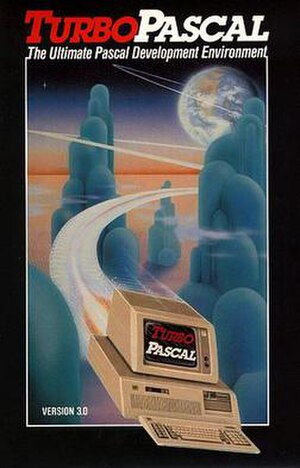Read Part 1

No, you’re wrong.
It wasn’t my COBOL code, or my system design skills. The floppies were not corrupted, I could see the data outside my code with tools I had.
As more boxes were delivered, I went down to ask for tea and a conference with the accountants.
I took a sip of tea, carefully placed it on the table in front of me and asked my first question. “Who was the person who negotiated the technical details of the data entry deal?”
Hums and haws, clearing of throats and the carefully worded answer. “While we were waiting for you we hired a guy who created the record layout and gave instructions to the data entry sub-contractor”.
“On what machine was the data entered and how is it transferred to floppy?”, I asked.
‘Yes, well, he left right after creating the record layout. He got a job in the Middle-East and he’s gone. The data entry contractor uses a Data General or some thing mini-computer and they delivered the first set of data to us on 9-track tape spools, but as you know we don’t have a tape-drive so we asked them to send it to us on floppies”.
“Aha! Now that makes a whole lot of sense to me. Ok, here’s what happened. They are writing the tape files to the disks as if they were tape dumps.”
Blank looks on the faces around me told me I was not making any sense.
“So what you have on the stacks of floppies are just continuous streams of data characters. There are no record markers. For COBOL or BASIC or any of the common languages we have here, that data has to be split into records. I cannot process any of the data you have in those boxes of floppies that are now decorating my office”
Much consternation, discussion and resigned exasperation ensued. There were a lot of floppy boxes!
“What?!”, said one. “Do we have to re-enter everything? Aei more che!” (We’re dead – In Bengali.)
Another said nothing but looked grave and thoughtful.
“So what can be done? Is there a way out?”, said the third. “There has to be a way to read the data, surely”.
“Ah yes, there is. You hired me”, I said. “And I may have the answer. I need peace and quiet for a couple of days and I need you to keep the tea coming” . I was 26 years old and very cocky, then. There are some who say I remain cocky even at twice the age and more!
 Five years previously, my interest in computer programming had gone from lukewarm to scalding hot when I spent a month learning PASCAL. This language overshadowed my previous training, COBOL at home at the age of 15 and BASIC, of which I was particularly fond. PASCAL was different from anything I’d experienced before. I’d seen multiple flavours of COBOL and BASIC, even dabbled in FORTRAN (a whole different story). PASCAL I was convinced was going to be the future of programming, a tool that went beyond data processing to processing words in wondrous ways. It could take in stream data and I just happened to have a copy of Borland’s Turbo Pascal lying around.
Five years previously, my interest in computer programming had gone from lukewarm to scalding hot when I spent a month learning PASCAL. This language overshadowed my previous training, COBOL at home at the age of 15 and BASIC, of which I was particularly fond. PASCAL was different from anything I’d experienced before. I’d seen multiple flavours of COBOL and BASIC, even dabbled in FORTRAN (a whole different story). PASCAL I was convinced was going to be the future of programming, a tool that went beyond data processing to processing words in wondrous ways. It could take in stream data and I just happened to have a copy of Borland’s Turbo Pascal lying around.
Against all that was the fact that I had last used PASCAL in the classroom 5 years ago and hadn’t seen it since. But I was cocky and there hadn’t been a data handling problem I’d seen that I had not yet been able to solve.
That night and the following day I worked at the problem, trying to remember techniques and syntax learned 5 years ago in the classroom. I had no access to manuals and Al Gore hadn’t invented the internet yet. It was all trial and error. Another night was spent all alone in the computer room. Around 4pm the next day, I was seriously considering the folly of making grandiose statements for my PASCAL skills had apparently totally vanished. I had not been able to get anything going at all.
Fatigued and crankier than normal at the thought of the impending announcement of my failure, the first ever in my young techie career, I was just about to snap the heads right off the sales guys as they came in boisterously. Brandishing a floppy the head of sales was beaming from ear to ear. “You’ll never guess what I have here!”.

“What is it?”, I hissed.
“A C Programming Language interpreter! Have you ever heard of such a thing?”.
I hadn’t. I also had never seen C. I was aware it was becoming all the rage and I had it on my agenda to figure out after I had streamlined this process I had created. A new big mini-computer was on order and one of the first items was to learn C and finally transfer all the processing on to that Motorola 68020 based UNIX beast. We could then seriously make a dent in the data.
“Stop waving it about! Give it to me!, I cried.
“Let’s see, now, what have we got?”, I slid the floppy in and fired up the computer.
<to be continued>


WAS HERE
smart alec!
not a techie like u but is eagerly waiting to hear last part of it
Check back in again in a day or so… I haven’t written it yet!
And thank you for being a valuable and faithful reader.
You certainly know how to write those cliff-hangers! I’m on the edge of my seat. Yours impatiently, J
Pingback: Hello World! Chopped! | Slo-Word